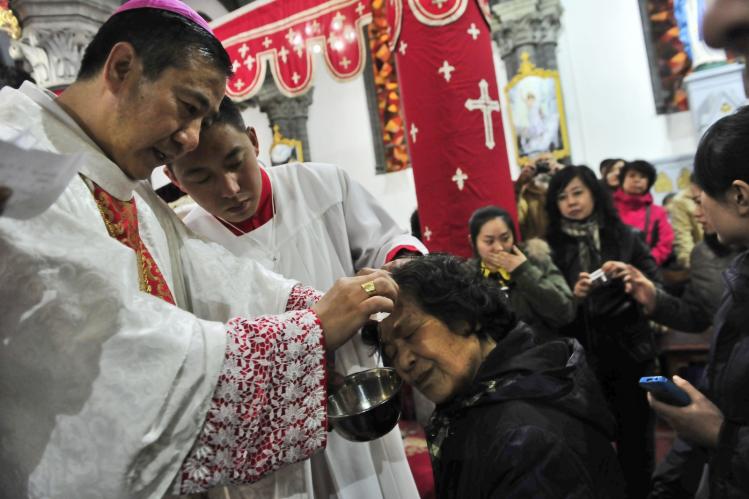
The introduction to the Lectionary states that “at the Vigil on the holy night of Easter there are seven Old Testament readings which recall the wonderful works of God in the history of salvation.” Other church documents repeat this idea. Pastoral commentaries echo it too, though sometimes calling the readings “our family story” or something similar. Almost everyone I know thinks that the readings at the Easter Vigil are about history. I am not convinced.
There are seven Old Testament readings for the Paschal Vigil in our current lectionary: Creation (Genesis 1), the sacrifice of Isaac (Genesis 22), the crossing of the Red Sea (Exodus 14), the Lord calls you back (Isaiah 54), come to the water (Isaiah 55), Divine Wisdom (Baruch 3), and I will give you a new heart (Ezekiel 36). If the goal is to recount history, this is a puzzling line up. Isn’t creation part of a mythic “pre-history”? Why the sacrifice of Isaac? Why the crossing of the Red Sea but not the making of the Mosaic covenant? Where is the kingship, David, Solomon, the Temple? The chosen prophetic readings are hardly representative.
Hearing the word “history,” our minds naturally go to the past. But these readings often seem much more concerned with the future. The work of God in creation establishes the order and beauty of our world—an ongoing wonder. The restoration of Isaac to Abraham renews the promises of God for the flourishing of Abraham’s descendants yet to come. The crossing of the Red Sea transforms a ragtag group of fleeing slaves into a free people with a future before them.
The prayers following the Old Testament readings highlight their implications within the Christian dispensation, and within these prayers baptism is a constant theme pointing us forward even within the liturgy itself. Indeed the Missal produced following the Council of Trent (1570) explicitly described the Old Testament readings of the Vigil as “the final catechesis of the catechumens” before baptism.
The Vigil as prelude to baptism was “on the books” of the Roman Rite from an early stage, but for centuries this fact was obscured in practice. The reform of the Vigil under Pius XII in the 1950s tried to revive that link by adding a renewal of baptismal promises. But it was not until 1972, with the restoration of the catechumenate (RCIA), that Catholics could begin to reconnect baptism with the Easter Vigil more concretely. This created a new lens through which to see these readings. When the readings are looked at through the lens of baptism, their genius fairly sparkles.
Creation shows God’s power to give life, and to create a new world; our creating God is poised to act again in the liturgy. The obedience of faith displayed in the story of Abraham and Isaac speaks to the challenge of belief and trust in God, a challenge well known to those who have wrestled with unbelief. The events at the Red Sea underscore the Christian conviction that true freedom comes by passing through the water. The promise of reconciliation in Isaiah 54 (“though the mountains leave their places...my love will never leave you”), and Isaiah 55’s thrilling invitation to come to the water and partake of a feast (“come, without paying and without cost”) sing to us of the loving and generous promises of God—promises fulfilled at font and table. These readings awaken hope and expectation not only for the sacraments but for the life into which those sacraments welcome us.
The Baruch reading is harder to construe, but the key may be found in the typological use of Divine Wisdom as a figure of Christ. Wisdom “has come to earth and had conversation with us,” this reading proclaims. The prophet urges us to remain faithful to this amazing gift. The Ezekiel reading, which emphasizes human sinfulness, is a difficult text. Nevertheless, its promise of a new heart and a new spirit has struck a chord with many. Whether one was baptized long ago or is about to be baptized on this night, the mystery into which one is being drawn is the same: the gift of a new heart and spirit. It is a transformation only God can accomplish.
These readings address us from the past. But they tell us more than what God did at some point long ago and far away. They illuminate what God is still doing—and will do—in order to save the human race. Like the liturgy itself, these readings speak of origins and destiny together. Unless we understand this, we will miss the best of what they have to tell us.

